This is part of a series that will look at how to enjoy hiking in Japan at all times of the year
After the first rains of spring have fallen in the month of March, fresh shoots appear all around the countryside and the mountains start to turn a vibrant green. This is the time of year that Japan’s rhododendrons also start to come out and they flower from about April to June depending on the variety. They often appear as brilliant colourful splashes in the forest, but they can also carpet entire hillsides. Japan is a rhododendron and azalea hotspot in the world, and the country has around 50 endemic varieties and many more hybrids. These are often on display as ornamental borders in the towns and cities of Japan, but coming around a corner in a mountain to find wild specimens in their natural habitat is particularly thrilling. Some nature-lovers would say that they rival Japan’s cherry blossom in terms of their aesthetic display.
Mt Kuju
One of the most impressive wild displays of these flowers can be found in Kyushu on the slopes of Mt Kuju in late May or early June. Reaching the summit of the mountain is an intermediate trek that requires a fair level of fitness. A good place to start is the Makinoto-toge trailhead and you will soon start to see the views and flowers after setting off.
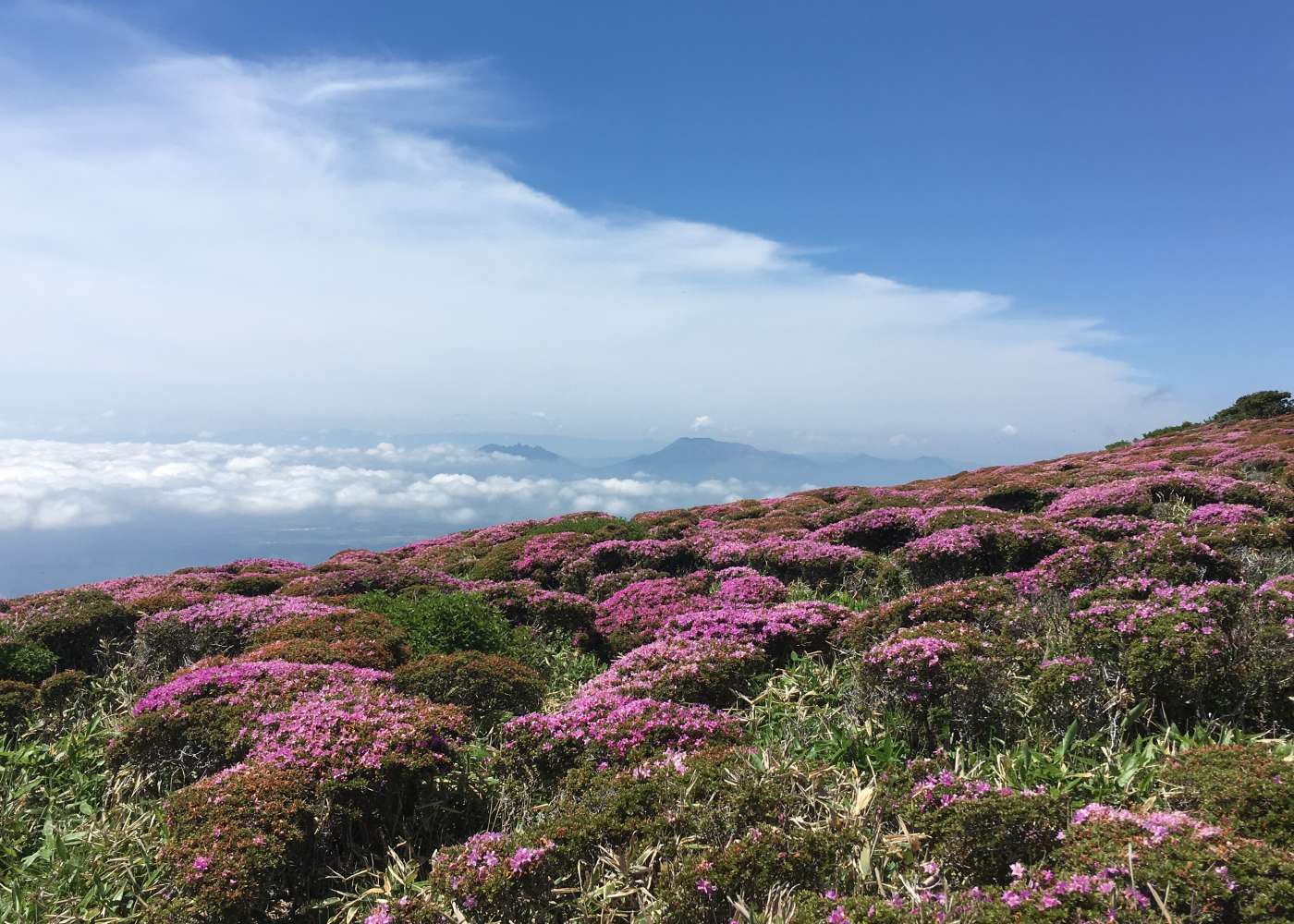
Kuju’s Miyama-kirishima carpeting the mountainside with Mt Aso in the background. Photo by Alison Beale
The Kuju massif is made up of a number of broad open peaks with few trees. This whole area is covered in a type of rhododendron called miyama-kirishima which carpet the hillsides turning the whole mountain pink. It is truly a wonderful sight. Volcanic Mt Aso with its distinctive outline lies smouldering in the distance over a sea of wispy clouds. From the mountain you can walk down towards the beautiful historic castle town of Taketa. One of Japan’s major taiko drum groups has an outdoor stage on the outskirts of the town and a very memorable experience is to watch these powerful athletic drummers on the edge of the mountain. The Kuju highlands are also home to some of the best hot springs in the country.
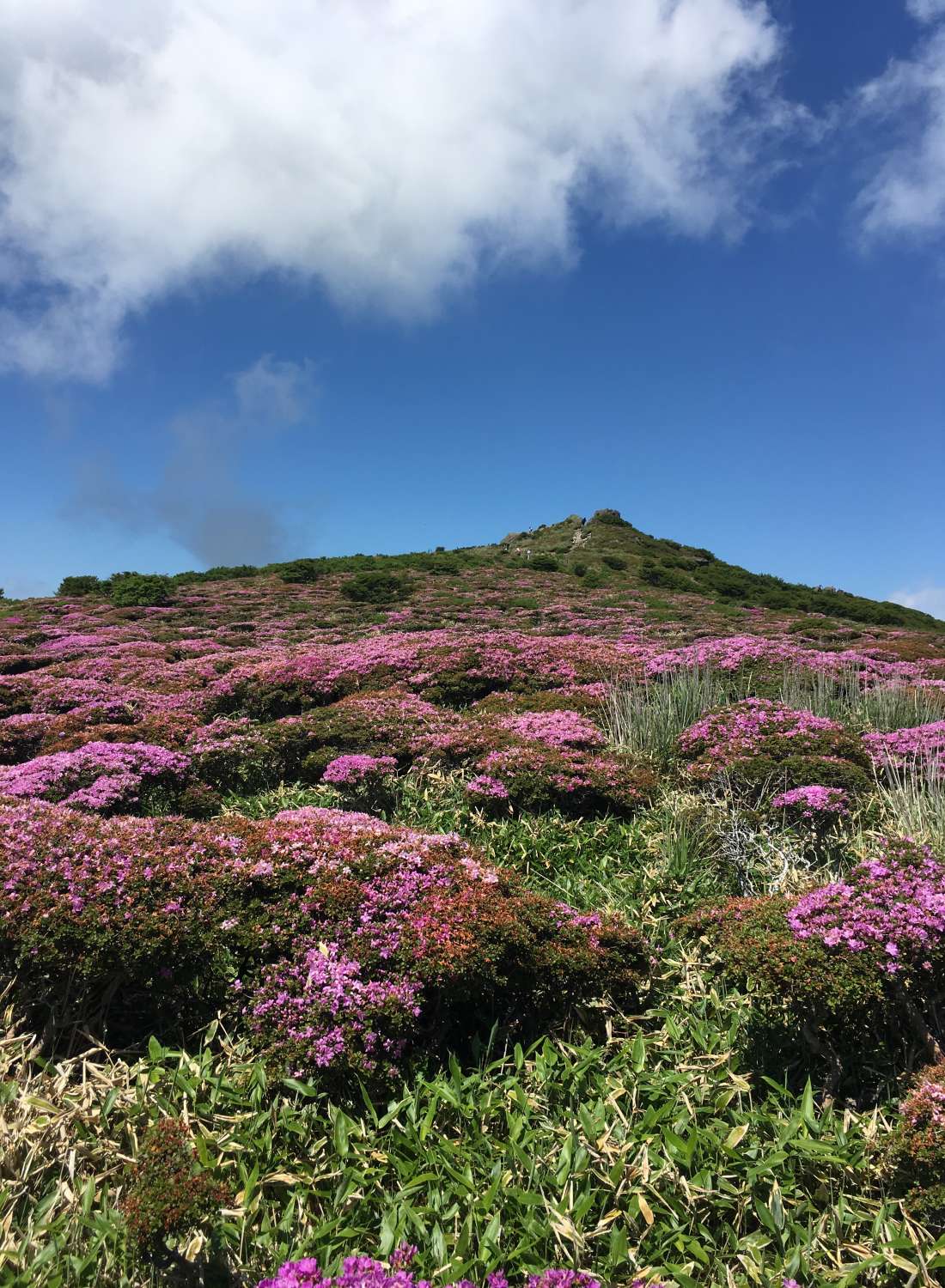
Rhododendrons on Mt Kuju. Photo by Alison Beale
Nikko
Closer to Tokyo, Nikko is a famous place in Kanto for rhododendrons. The scenery around Nikko is beautiful and dramatic throughout the year, but in the spring, the pink of the rhododendrons adds a soft pretty splash of colour to the rocky wild nature of the surroundings.
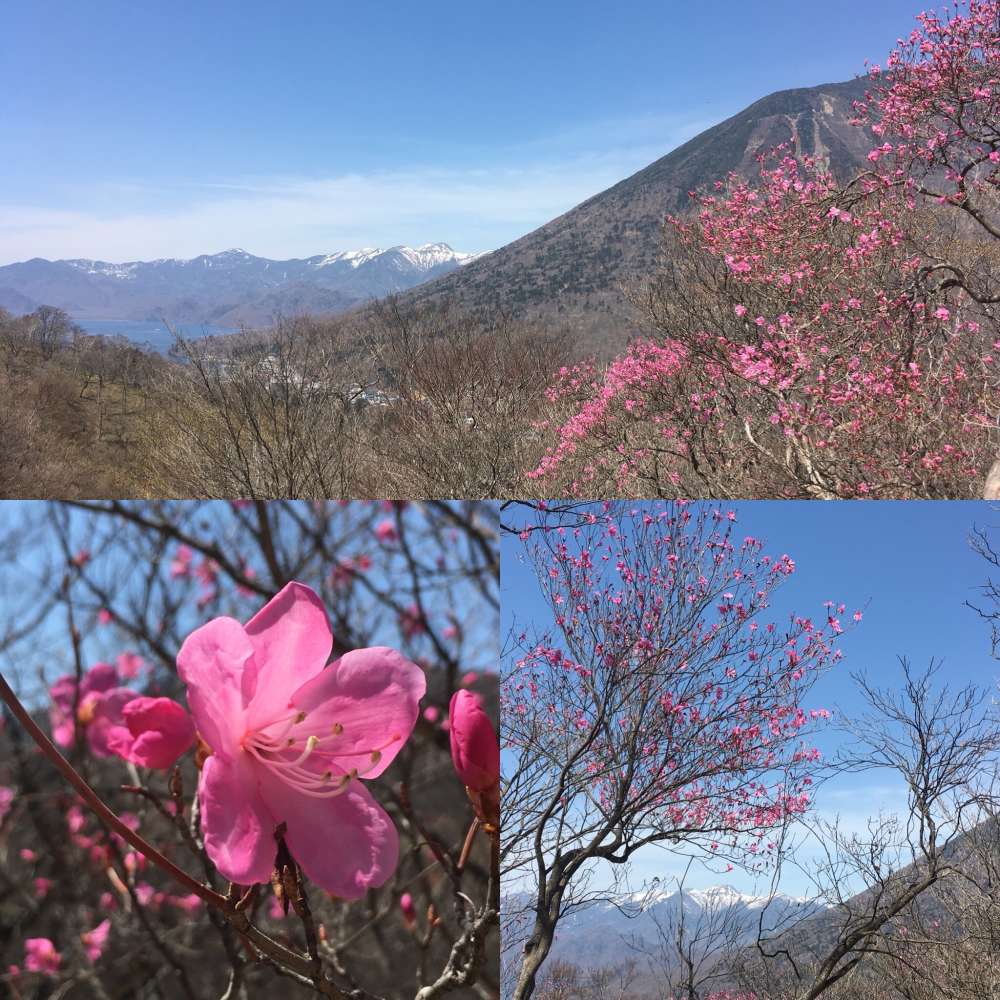
Nikko’s famous rhododendrons. Photo by Alison Beale
The shores of Lake Chuzenji are home to a number of varieties of rhododendron. A good walk is from Ryuzu-no-taki along the north shore of the lake to Senjugahama beach. It takes about 90 minutes to reach the beach which has a beautiful view of the lake and local mountains. Around the end of May or early June is the best time to see the rhododendrons. Senjugahama also has an impressive display of Japanese primrose (Primula japonica) in June and if you time it right you may be able to see the rhododendrons and primrose on the same walk.
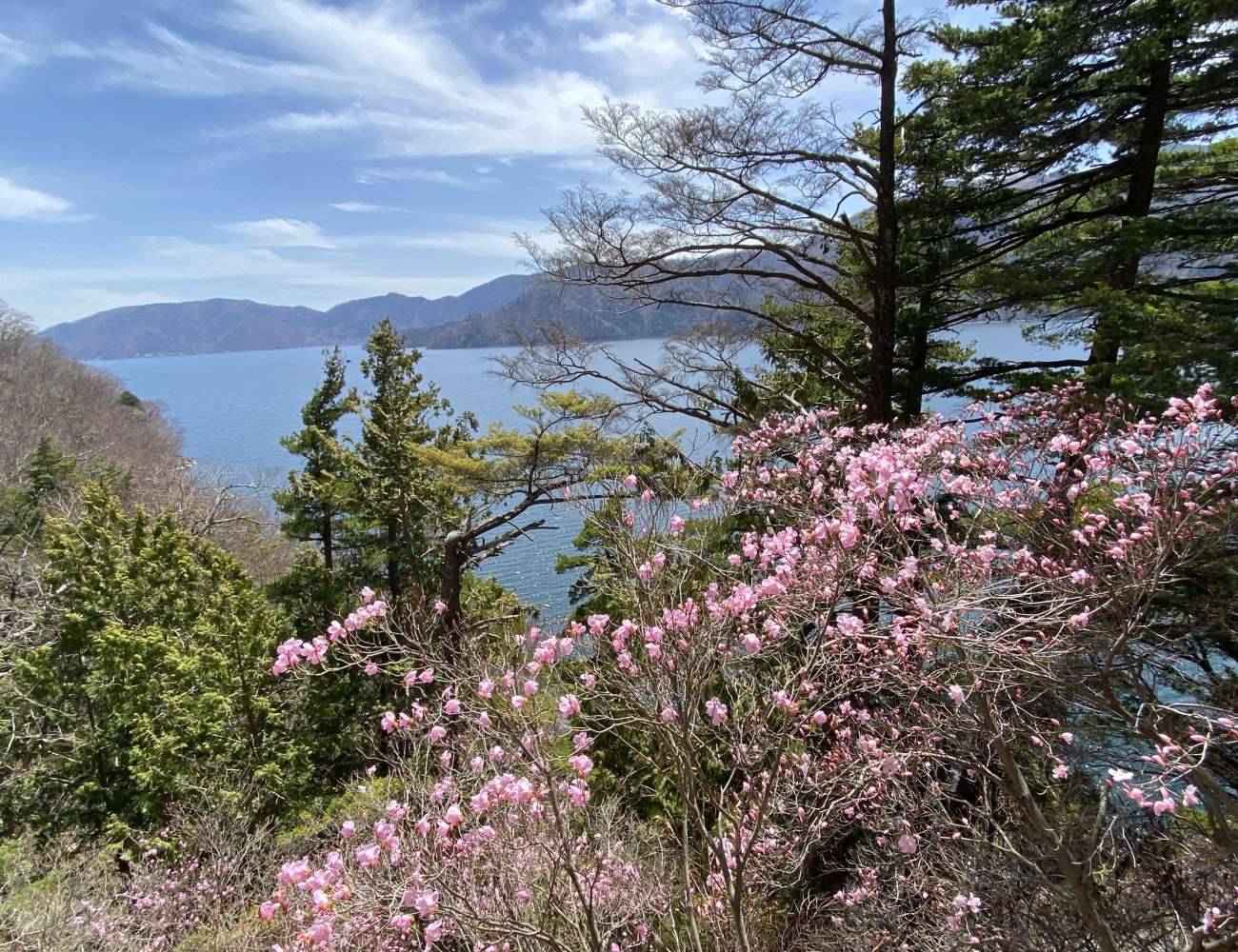
Walking along the shores of Lake Chuzenji in late May you often come across splashes of pink in the forest. Photo by Alison Beale
Mt Yamato Katsuragi
Mt Yamato Katsuragi (or simply Mt Katsuragi) is a key place to find rhododendrons in the Kansai region, and there is a hillside just off the summit of the mountain that is covered in a red variety called yama-tsutsuji (Rhododendron kaempferi). The best time to visit is early-mid May.
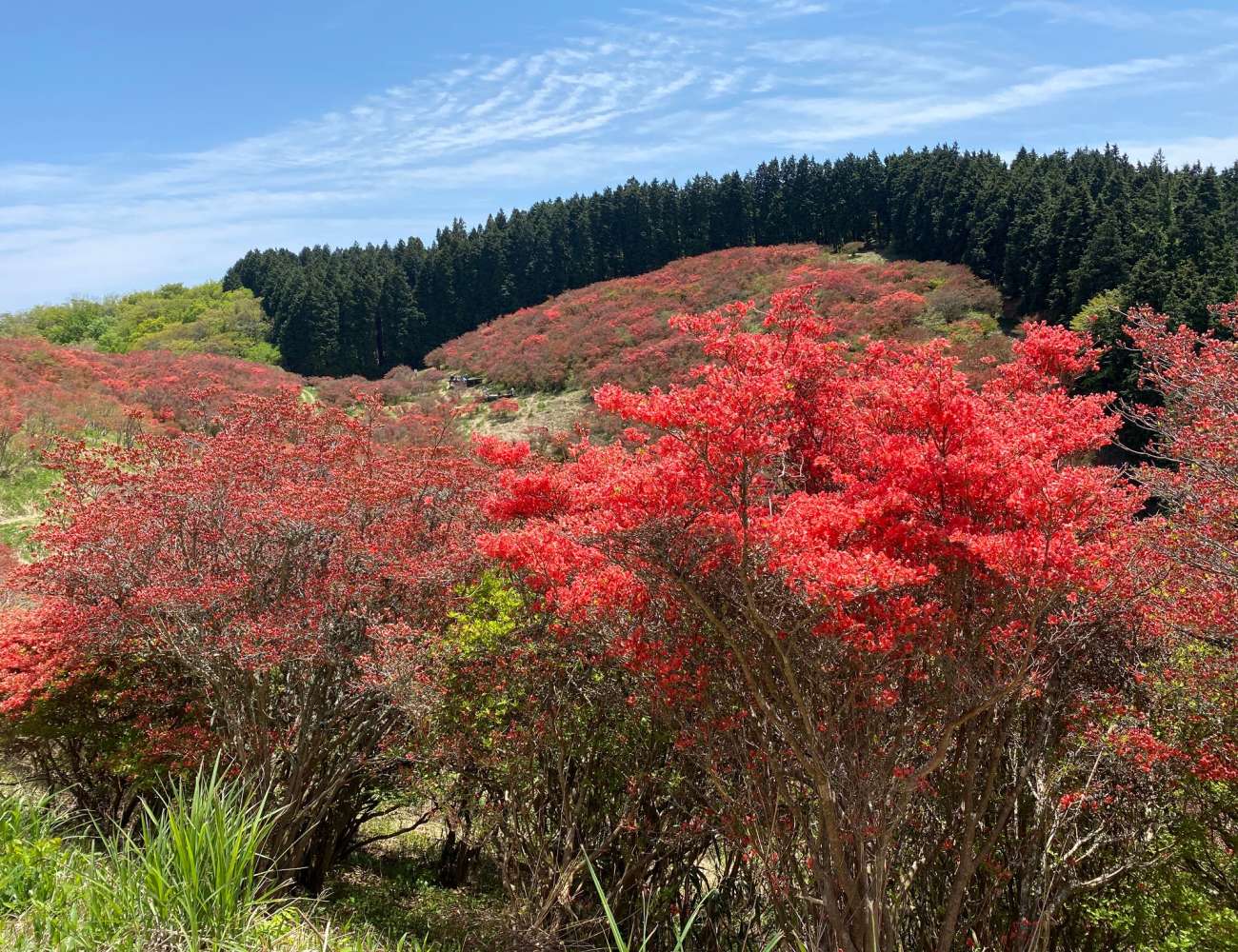
The hillside just below the summit of Mt Katsuragi is covered in red ‘yama-tsutsuji’ rhododendrons. Here the ones in the distance are still only partially out. Photo by Alison Beale
A good place to start is Kintetsu-Gose on the Kintetsu line and about 90 mins (including connections) from either Osaka or Kyoto. From here there is a bus to the Katsuragisan Ropeway. A walk called the Kujira-no-taki course leads from there up to the summit and takes about 90 minutes. As you walk you will gradually start to see rhododendrons in the forest, but then the hillside opens up and is entirely covered in the flowers. Many walkers, photographers and picnickers visit here in season. The red of the rhododendrons looks beautiful against the blue sky and fresh green of the trees at this time of year. It is an impressive sight.
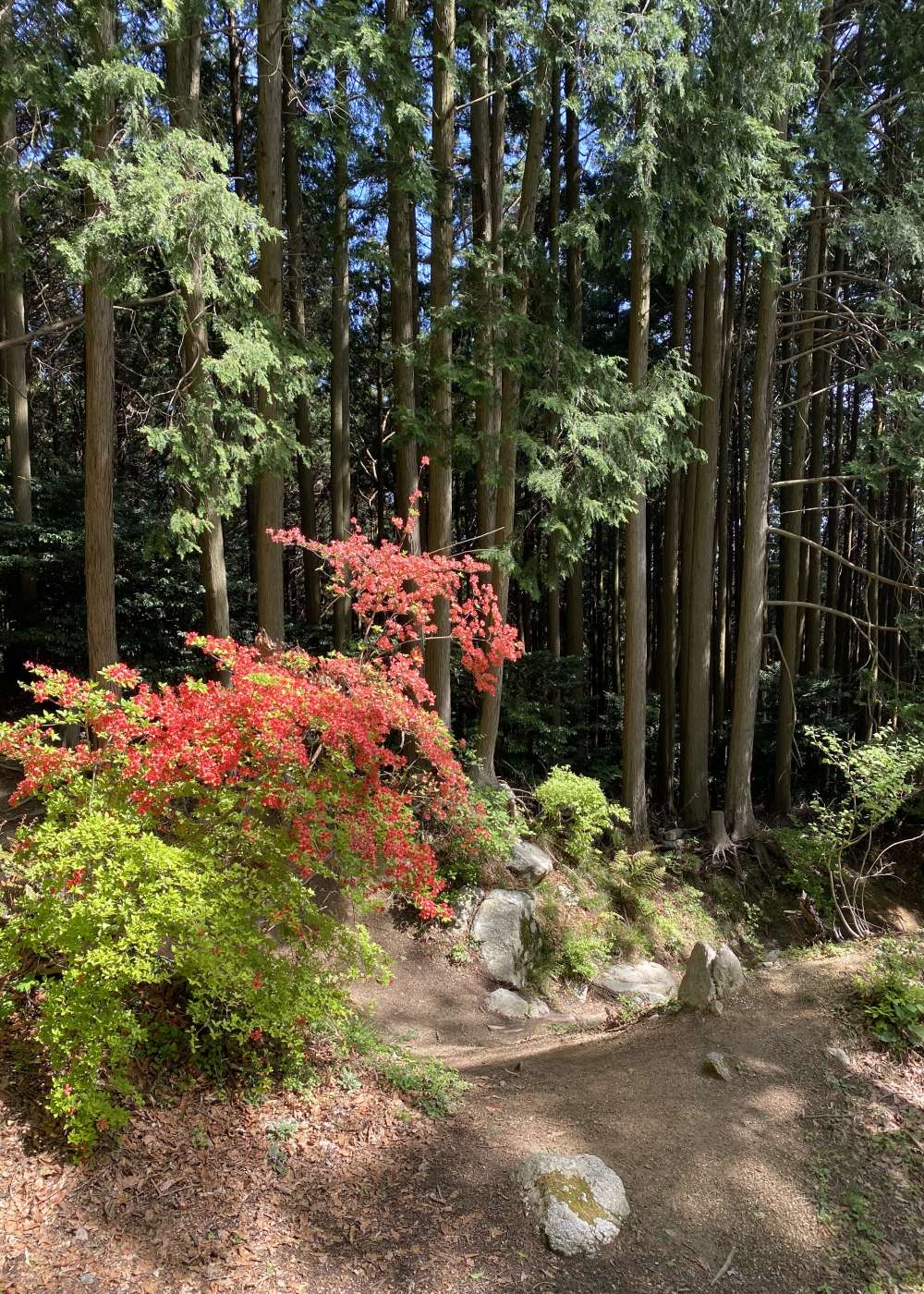
Rhododendrons on the Kujira-no-taki course on Mt Katsuragi. Photo by Alison Beale
Rhododendrons can be found the length of the country from Hokkaido to Okinawa, and there are many other places to enjoy the spectacle of these flowers. These have been some of my favourite spots, but there are also so many other places in the mountains covered in rhododendrons to discover and enjoy.
-
About the author
Author: Alison Beale
Originally from the UK, Alison Beale spends her weekends outdoors exploring the geography, botany and mycology of Japan. Convinced that Tokyo is the foremost outdoor capital of the world, she is a self-professed evangelist about the beauty and richness of the nature of Japan.





















































